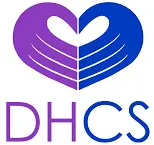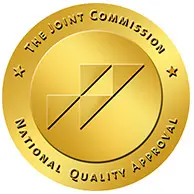PTSD Treatment
In Orange
County
The Path To Sound Mind, Body and Soul
Orange County Luxury Residential Mental Health Facilities
Trauma therapy, or PTSD treatment, is a type of therapy that can help an individual handle the emotional distress caused by a traumatic event. More than 50% of people deal with at least one form of trauma at some point. Traumatic events may include sexual abuse, a tragic accident, chronic abuse, and bullying, to mention a few.
There are different types of trauma therapy, depending on the type and severity of the traumatic memory. It is important to find a program that specifically uses trauma treatment. Acera Health works with patients to determine the best treatment approach for each patient with PTSD treatment in Orange County.
What Is PTSD?
Post-traumatic stress disorder (PTSD) is a psychiatric condition resulting from witnessing or experiencing a terrifying event. PTSD has had many names over time, such as “shell shock” and “combat fatigue” in WWI and WWII, respectively. The condition can affect anyone, notwithstanding their gender, race, age, or nationality.
It is common for people to experience feelings of shock, fear, and anxiety after a traumatic event. For most of these people, these feelings associated with the event go away with time. For people with PTSD, these symptoms only worsen as time passes. Sometimes these symptoms can impair their ability to carry out activities of daily living.
PTSD affects approximately 6% of the population, and it’s more common in women than men. While the symptoms of the condition can last for years, getting effective treatment is critical to improving function.

How Does PTSD Develop?
PTSD develops after a traumatic event. Everyone reacts to life-threatening situations differently. Each individual has their unique way of responding to fear, anxiety, and the threat brought about by tragic circumstances. Because of this, not all people who experience or witness traumatic events end up developing PTSD.
The level of social and emotional support an individual receives after a traumatic experience significantly lowers their likelihood of developing PTSD. Individuals repeatedly exposed to life-threatening situations are at the highest risk of developing post-traumatic stress disorder.
Moreover, a person may be more likely to develop PTSD if they already suffer from other mental health conditions. The intertwining of pre-existing mental health challenges with the traumatic event can complicate the individual’s psychological response. It’s this nuanced understanding of individual experiences that helps to shed light on the concept of PTSD without flashbacks, broadening the scope of how we recognize and approach treatment for this complex disorder.
On top of post-traumatic stress disorder, there always exists the possibility of a co-occurring disorder. This is also known as a dual diagnosis, and is when a substance abuse disorder and a mental health disorder overlap in an individual. This intertwining of disorders can further amplify the challenges faced by individuals, especially when confronted with the prevalent PTSD stigma.
People exposed to substance use often develop a mental health issue at some point in their lives, so it’s important to treat both the substance abuse and mental illness when this happens. Understanding the specific nature of your symptoms is crucial, which is why Acera Health encourages taking our complex PTSD quiz. This tool is designed to help identify potential symptoms of complex PTSD, offering insight into how these might interplay with substance abuse issues.
At Acera Health, we have treatment programs specifically for people who suffer from substance abuse and traumatic stress. Recognizing the signs of complex PTSD through our quiz can be the first step toward receiving comprehensive care that addresses both the substance abuse and any underlying traumatic stress.
Signs and Symptoms of PTSD
Most PTSD symptoms start to show within the first three months after the traumatic event. In special cases, however, individuals may not experience any symptoms for years.
The intensity and the duration of these symptoms vary from one individual to the next. The recovery process also varies from person to person. Some may get better within six months of treatment. Others take much longer. Understanding whether PTSD is neurodivergent helps in framing these symptoms within a broader neurological context.
The signs and symptoms of PTSD fall into four distinct categories, as highlighted below:
- Avoidance: The individual may tend to stay away from people, places, feelings, or situations that make them relive their trauma. They may alienate themselves from their family and friends, and this may lead to depression. They may not want to talk about what happened or their feelings about the trauma.
- Intrusion: Individuals may experience constant flashbacks and nightmares about the tragedy. As a result they may live in fear of the events happening all over again. They may also show extreme emotional distress or physical reactions to things that remind them of what happened.
- Negative changes in thinking and mood: People living with PTSD may be bitter over what happened to them. They may have challenges forming and maintaining relationships, lose interest in activities they once loved, and experience overall feelings of hopelessness.
- Negative changes in arousal and reactivity: Examples of arousal and reactive signs can range across behaviors. These behaviors include sudden angry outbursts, engaging in self-destructive behaviors, being overly suspicious of their surroundings, having sleeping problems, and being excessively irritable.
As mentioned, most people who go through traumatic events will experience all these symptoms. Long-term effects of untreated PTSD include a drastically-altered nervous system.
To receive a PTSD diagnosis, the symptoms should have lasted for more than four weeks and must impede their daily functioning.
When To Seek Medical Attention
Treatment for PTSD should be considered under the following circumstances:
- The symptoms persist for more than a month
- The symptoms are so intense that they impact the ability of the individual to function normally
- The individual becomes suicidal
Treatment Options for PTSD
The objective of PTSD treatment is to manage the physical and emotional symptoms. While also making the patient more independent, and helping them better manage triggers.
The following are the main types of PTSD treatment:
Medication
Doctors often prescribe their patients antidepressants to keep the symptoms under control, such as:
- Tricyclic antidepressants
- Mood stabilizers
- Selective serotonin inhibitors
- Atypical antipsychotics

Psychotherapy
Psychotherapy often involves assisting the person in developing skills to manage their symptoms and triggers. Another goal of therapy is to educate the patient’s family about the disorder. There are many psychotherapy techniques used to treat people with PTSD, for example:
- Family therapy, where the individual’s family is educated on how to live with someone with PTSD.
- Cognitive behavioral therapy involves helping the individual identify and manage trigger factors.
- Psychodynamic therapy is geared toward helping individuals look into their values.
Additionally, understanding the differences between CPTSD vs PTSD can further tailor therapy approaches to meet the specific needs of those with complex trauma histories.
Get PTSD Treatment in Orange County With Acera Health
The recovery journey for PTSD is gradual. While symptoms of the condition may not disappear completely, getting early treatment can help manage it more efficiently.
When getting PTSD treatment, you want to make sure you are working with a competent provider. Acera Health offers an evidence-based treatment program for adults battling mental health issues like PTSD.
Contact us today to start your journey to recovery and learn more about our Orange County treatment centers.

Reach Out Today
To learn more about if Acera Health is right for you, and what to expect, contact us Today!
"*" indicates required fields
3100 Bristol St. Suite # 250 Costa Mesa, CA 92626
info@acerahealth.com
DHCS license number: MHBT220400
DHCS license expiration date: July 20, 2024
DSS license number: 306006131 & 306006072



